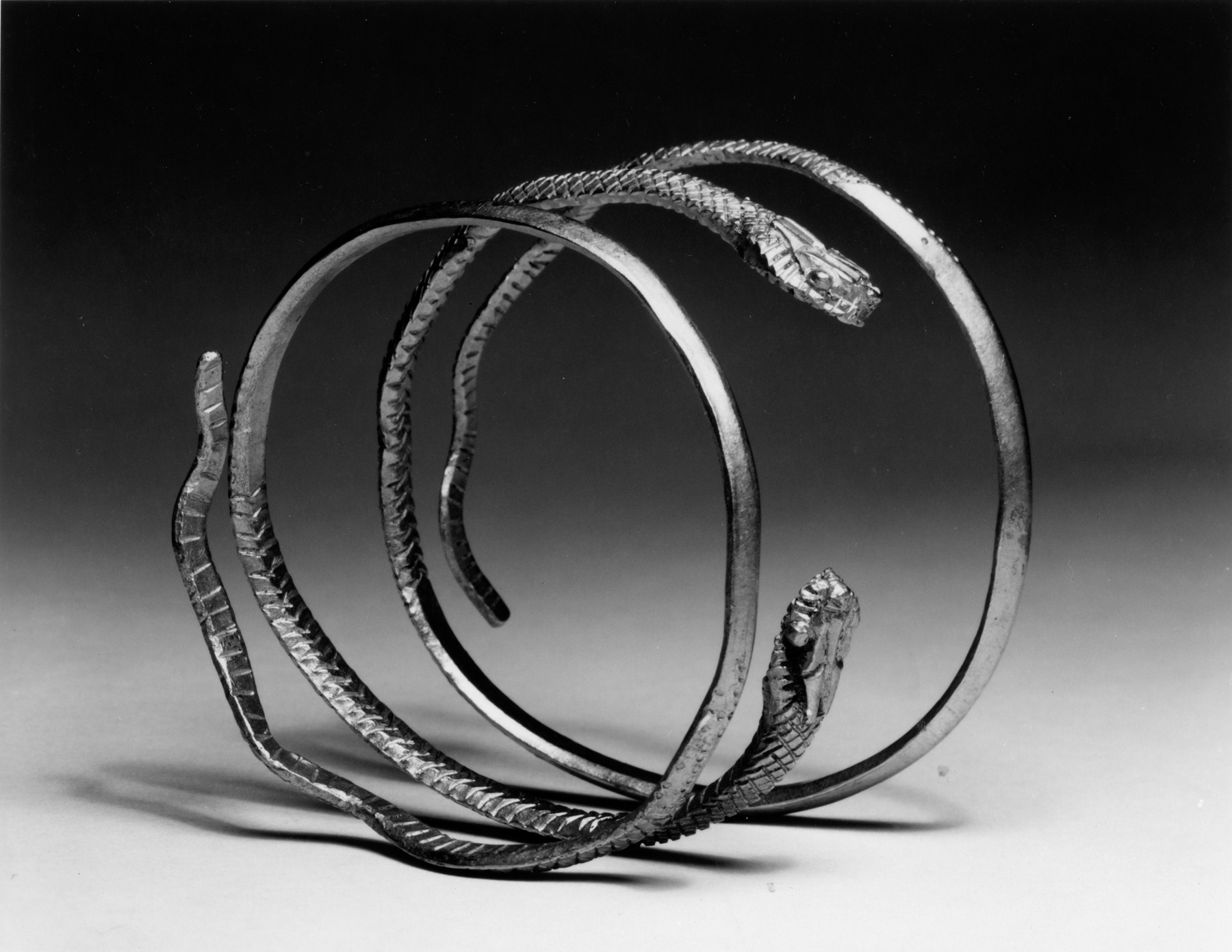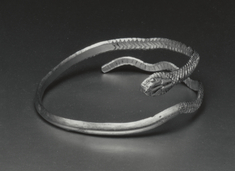Snake Bracelet
Solid-gold bracelets and rings in the form of snakes were among the most popular objects in Greek and Roman jewelry. The bracelets were often worn in pairs, either on the wrist or on the upper arm. The snakes symbolize fertility and were intended to ward off evil.
Provenance
Provenance (from the French provenir, 'to come from/forth') is the chronology of the ownership, custody, or location of a historical object. Learn more about provenance at the Walters.
Giovanni Dattari, Cairo [date and mode of acquisition unknown]; Collection of Giovanni DattarivSale, Hôtel Drouot, Paris, June 17-19, 1912, lot 573; Henry Walters, Baltimore, 1912, by purchase; Walters Art Museum, 1931, by bequest.
Exhibitions
| 2010 | Bedazzled: 5,000 Years of Jewelry. El Paso Museum of Art, El Paso. |
| 2006-2009 | Bedazzled: 5,000 Years of Jewelry from the Walters Art Museum. Frist Center for the Visual Arts, Nashville; The John and Mable Ringling Museum of Art, Sarasota; The Walters Art Museum, Baltimore. |
| 1979-1980 | Jewelry - Ancient to Modern. The Walters Art Gallery, Baltimore. |
Geographies
Roman Empire (Place of Origin)
Measurements
Diam: 2 3/4 × D: 7/8 in. (7 × 2.2 cm)
Credit Line
Acquired by Henry Walters, 1912
Location in Museum
Not on view
Accession Number
In libraries, galleries, museums, and archives, an accession number is a unique identifier assigned to each object in the collection.
In libraries, galleries, museums, and archives, an accession number is a unique identifier assigned to each object in the collection.
57.535



